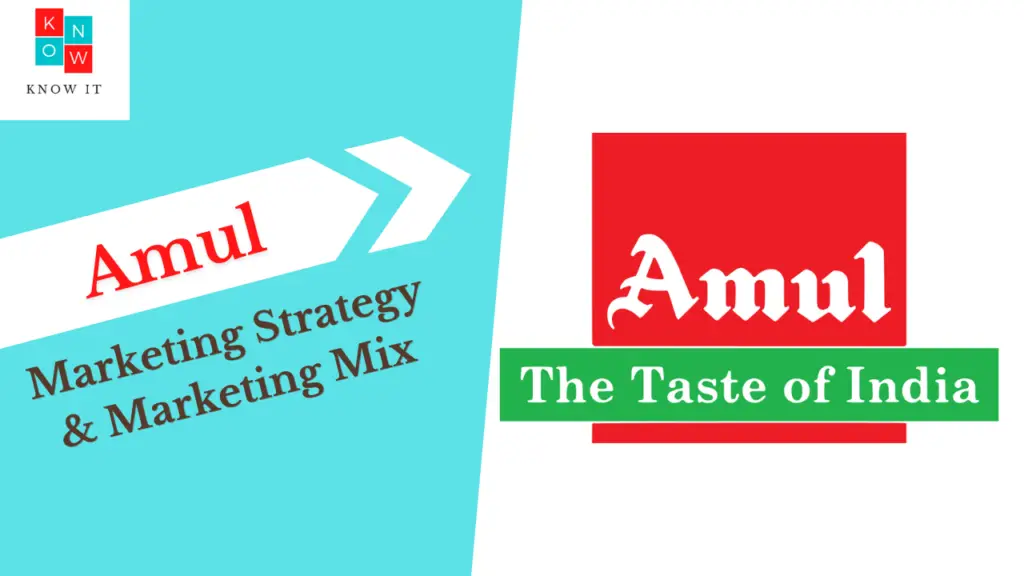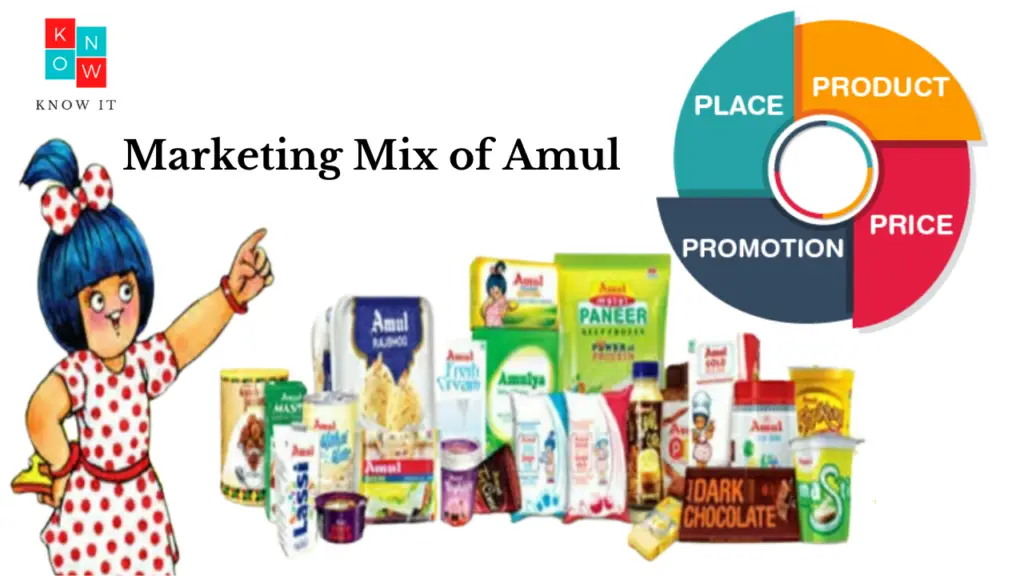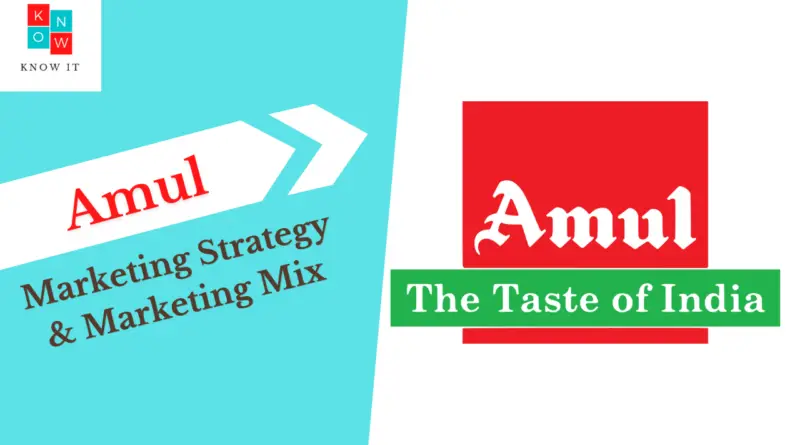Marketing Strategy of Amul
Amul Marketing Strategy And How They Have Won India's Dairy Product Market
Amul is one of the most popular dairy brands in India. It has been able to establish its dominance by following a very specific marketing strategy – “Khoj-Khoj, Khurak-Khurak, Doodh-Doodh”.
The company has used this strategy for over 50 years and it has helped them to establish themselves as the king of all dairy products in India.

Introduction: What is Amul and What Makes Them Successful?
Amul is a dairy product brand in India. They are one of the largest dairy product brands in India and their success has been attributed to their marketing strategy.
Amul is a dairy product brand in India that has been very successful as they have managed to create a strong connection with consumers. They have done this through their marketing strategy which focuses on the Indian culture and values, such as family and tradition.
The company was founded in 1946 by Shri Kaira to provide “pure butter” to people in his village. Amul became a cooperative society in 1948 and began selling its butter under the Amul brand name across India after it became a member of the International Cooperative Alliance (ICA) in 1964.
Amul is India’s largest dairy cooperative. Amul was founded in 1946 by Dr. Verghese Kurien, a social entrepreneur who led the White Revolution in India.
Dr. Kurien was born to a farming family in Kerala, but his love for science and technology led him to study engineering at Madras University, where he graduated with honors in 1944. He briefly worked as an assistant engineer before joining the Indian Institute of Technology at Kanpur in 1945 as a lecturer.
He had always been passionate about agriculture and wanted to apply science and technology for the betterment of farmers’ lives. In 1946 he left Kanpur IIT to start working on his idea of setting up a milk cooperative society that would provide milk producers with an organized market for their produce and thereby improve their economic condition
Marketing Strategy of Amul
Amul is a brand of dairy products in India. It has been around for many decades and is considered to be one of the most popular brands of milk and dairy products in the country.
It has been using marketing strategies such as advertising, sponsorship, and social media to promote their products. Amul is also sponsoring some prominent sporting events such as IPL cricket matches.
The company has also been using marketing strategies like engaging with customers on social media platforms like Facebook and Twitter, and this strategy has helped them grow their customer base.
Amul has also been running an ad campaign with the mascot Chhota Bheem on television which is very popular among children.
Competitive advantage in the Marketing strategy of Amul
Amul has two competitive advantages to their branding. The first is the supply chain, as they have a large network of dairy suppliers that allow them to supply their products reliably and constantly. The other advantage is that Amul has a fewer number of distributors than other brands, resulting in less competition for customers and lower prices. This is because Amul is one of the most world’s largest dairy product manufacturing company. This gives them a competitive advantage of high levels of output. The second competitive advantage they have is that they’ve got a wide product portfolio which means they can sell their products in retail outlets as well as Amul Shoppe’s which are targeted to rural India.
A Comprehensive Breakdown of the Marketing Mix for Amul - India's Fastest Growing Food Company
This article will provide a comprehensive breakdown of the marketing mix for Amul – India’s fastest growing food company. The marketing mix is an important part of the business strategy that every organization should implement to become successful.

Introduction: What is the Marketing Mix of Amul?
The Marketing Mix of Amul is a combination of 4 P’s: product, price, place and promotion.
Product refers to the quality and quantity of the product.
Price is the cost at which a company sells its goods to the consumer.
Place refers to distribution channels for marketing goods and services.
Promotion is a set of activities that a company undertakes in order to create awareness about its offerings among consumers or buyers.
Product strategy: How does Amul make their products?
Amul is a well-known Indian dairy company that has been in the market for more than five decades. It is one of the largest food companies in India and is also the world’s largest dairy brand.
The company has a strong strategy to ensure that they are always ahead of their competitors. They have been successful because they have been able to maintain their focus on their products and develop new products when required.
In order to understand Amul’s product strategy, we should look at how this company makes its products. Amul has a strong focus on freshness and quality which can be seen in its product portfolio. The company uses milk from about 2,000 villages across India which gives it access to a wide variety of milk types depending on the season. The company has a team of over 4500 employees and is spread across 28 states in India. Amul’s success can be attributed to their product strategy which has made them one of the most successful brands in India.
Market segmentation strategy: How is Amul targeting their customers?
The Amul dairy company is a household name in India. They have been around for decades with a strong foothold in the Indian market.
Amul has a very well-defined market segmentation strategy. They target their customers through various methods like advertising, distribution channels, and social media campaigns.
They advertise on TV, radio, newspapers, and billboards to reach their customers who are mainly middle-class Indians. They also use social media platforms like Twitter and Facebook to reach out to their younger customers who are more tech savvy than their parents’ generation.
Amul has its own distribution channels which it uses to distribute its products all over India. It also has tie-ups with other distributors so that it can reach more people across the country. Amul also sells its products at wholesale prices to the government and private organizations like schools, colleges, and hospitals.
Price strategy: Can you compare Amul’s prices to other brands?
Amul is the largest food brand in India. They offer products at a much lower price than other brands.
The company has been able to offer their products at a lower price because they are able to manufacture products in bulk and sell them directly to the end customer.
Amul’s strategy allows them to produce more products with less cost which results in a lower price for the end customer.
Promotion strategy & Communication Strategy of Amul
Amul is a milk and dairy products company in India. It was established in 1946 and has been the market leader in the country. The company’s revenue for 2017-2018 was Rs. 25,000 crore and it exports its products to over 70 countries.
Amul’s communication strategy is to showcase its product benefits through creative advertising campaigns that are relevant to the target audience. Amul promotes its products through TV commercials, radio advertisements, posters, billboards, pamphlets and other promotional materials such as calendars and diaries.
The company’s marketing strategy is to keep a close eye on the changing needs of consumers by innovating with new products while maintaining quality standards at all times. It has also diversified into newer areas such as ice cream and baby foods.
Conclusion: A Comprehensive Guide to Amul Marketing Strategy for India's Dairy Market
This article was created to give an introduction on the Indian dairy market and how Amul has positioned itself in the market. It also analyzes how Amul is using its marketing strategy to take on competition and stay ahead of the game.




